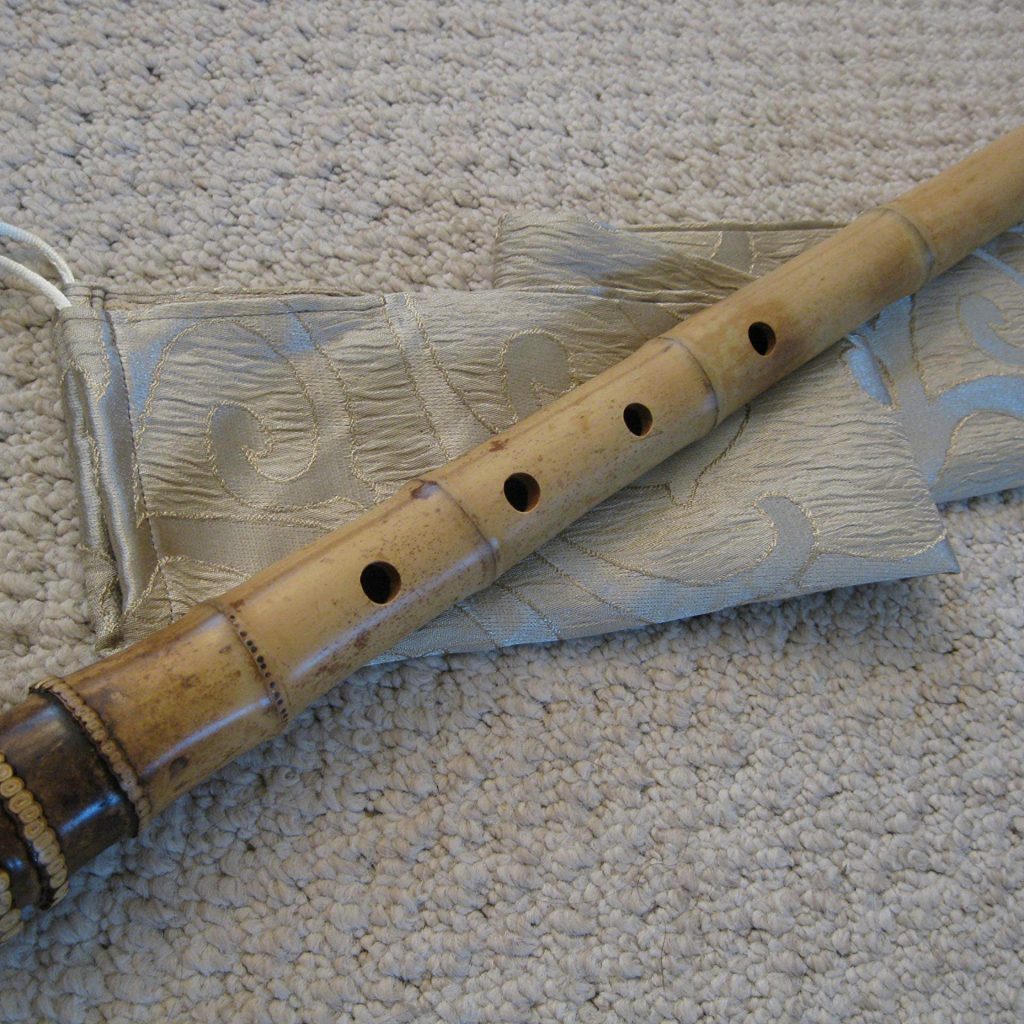The Shakuhachi flute, with its soulful tones and deep cultural roots, embodies the spiritual essence of Japanese music and Zen philosophy. Its history is a poetic journey through the centuries, weaving together the strands of ancient spirituality, samurai traditions, and contemporary musical expression.

Ancient Origins in China: The roots of the Shakuhachi can be traced back to ancient China, where it was known as the “Xiao.” Introduced to Japan by Chinese Buddhist monks, the flute took on new dimensions in its journey across the sea. In Japan, the Shakuhachi became associated with a form of Zen Buddhist meditation known as “suizen,” or blowing Zen, reflecting a shift from its ceremonial origins in China.
Samurai and Komuso Connection: During the Edo period (1603-1868), the Shakuhachi found an unlikely but profound connection with the samurai. Disarmed after the Tokugawa Shogunate’s peace edicts, some samurai became wandering monks known as “komuso,” who played the Shakuhachi as a form of spiritual practice. The Shakuhachi, with its deep, breathy tones, became an emblem of solitude, meditation, and the impermanence of life.
Fuke Sect and Religious Banning: The komuso monks formed the Fuke sect, using the Shakuhachi as a tool for meditation and alms collection. However, as the Shakuhachi became associated with political dissent, the Tokugawa government banned the Fuke sect. This led to the dissolution of the sect, but the Shakuhachi endured, finding refuge in various spiritual and secular practices.
Dimensions of Sound and Silence: What sets the Shakuhachi apart is its focus on both sound and silence. The instrument’s design, with its end-blown mouthpiece and five finger holes, allows for a limited range of pitches. However, it is in the intentional use of silence, the breaths between notes, that the Shakuhachi’s expressive power is fully realized. This interplay of sound and silence aligns with the principles of Zen Buddhism, emphasizing the profound in the ordinary and the beauty in the spaces between.
Modern Revival and Innovation: In the 20th century, the Shakuhachi experienced a revival both in Japan and internationally. Musicians explored new possibilities, adapting the traditional repertoire and integrating the instrument into diverse musical genres. The Shakuhachi, once associated primarily with Zen meditation, became a global symbol of Japanese musical artistry.
Cultural Heritage and Preservation: Recognizing its cultural significance, the Japanese government designated the Shakuhachi as an Important Intangible Cultural Property. Organizations and master players actively work to preserve and transmit the art of Shakuhachi playing, ensuring that its rich heritage continues to be passed down to future generations.
Global Influence: In the contemporary era, the Shakuhachi has found resonance far beyond Japan’s shores. Musicians worldwide, captivated by its haunting melodies and meditative qualities, incorporate the Shakuhachi into diverse musical genres, contributing to a global fusion of sounds and cultural expressions.
In conclusion, the history of the Shakuhachi is a journey that transcends time and borders. From its ancient roots in China to its role in Japanese Zen and the modern global stage, the Shakuhachi stands as a testament to the enduring power of music to convey spirituality, contemplation, and the essence of the human experience.